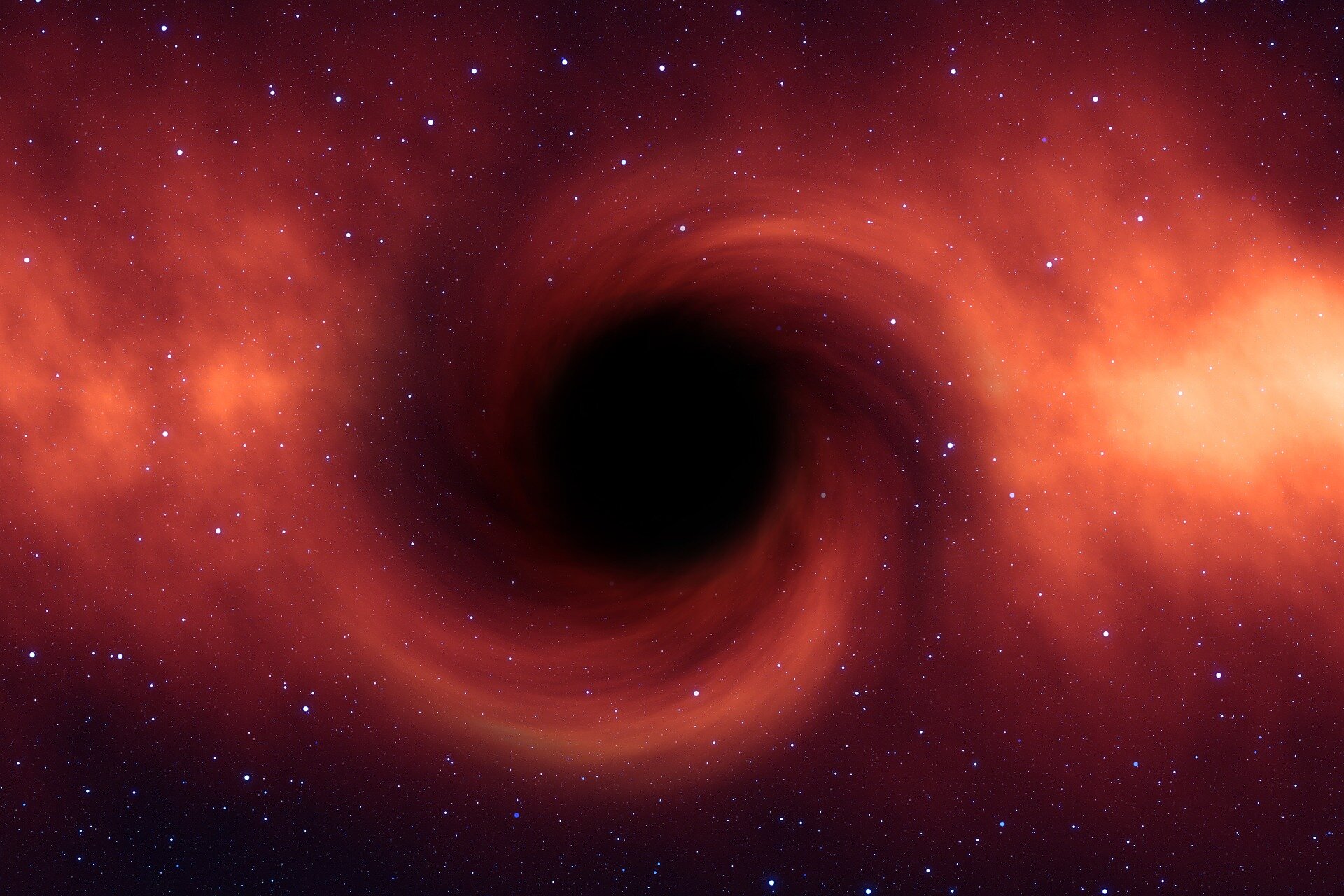Primordial black holes (PBHs) are fascinating cosmic our bodies which were extensively investigated by astrophysicists worldwide. As urged by their identify, these are black holes believed to have appeared within the universe’s early days, lower than a second after the Large Bang.
Physics principle means that inside the fraction of a second earlier than the universe was fashioned, space was not fully homogenous, thus denser and warmer areas may have collapsed into black holes. Relying on when precisely they had been fashioned inside this fraction of a second, these PBHs may have very totally different plenty and related traits.
Some theoretical physicists have been exploring the chance that PBHs contribute considerably to the anticipated abundance of dark matter within the universe, or in different phrases, that they’re main dark matter candidates. Gravitational wave observations gathered by the LIGO-Virgo-KAGRA collaboration and constraints set by these observations recommend that that is extremely unlikely.
But some current research urged that the clustering of PBHs on the time of their formation may change their merger price, which might doubtlessly allow values inside the constraints set by LIGO-Virgo-KAGRA. This clustering would additionally doubtlessly have an effect on present microlensing bounds, as PBH clusters would act as an enormous single lens that can’t be probed by microlensing research.
Researchers at Université de Genève, Sapienza College of Rome and NICPB have lately carried out a theoretical examine additional assessing the speculation that originally clustered PBHs may very well be dark matter candidates. Their paper, revealed in Bodily Overview Letters, introduces a comparatively easy argument that seems to rule out this chance.
“Our work was motivated by the declare, not but confirmed by literature, that primordial black holes with plenty across the solar masses may keep away from the present sturdy constraints coming from microlensing, in the event that they had been strongly clustered,” Antonio Riotto, one of many researchers who carried out the examine, advised Phys.org.
“Our examine proved that this declare is just not right. The thought is straightforward: clustered PBHs could keep away from the microlensing certain if the clustering is powerful sufficient, however this is able to be at odds with one other set of knowledge coming from Lyman-alpha forest, which means that this is able to require weak clustering.”
Of their analyses, Riotto and his colleagues mixed the constraints from microlensing set by earlier astronomical observations with Lyman-alpha forest knowledge. The Lyman-alpha forest is an absorption phenomenon that may be noticed utilizing astronomical spectroscopy instruments, presenting itself as absorption strains within the spectra of distant galaxies and quasars.
These absorption lines have turn out to be a distinguished probe in astrophysics, notably in research investigating density fluctuations within the Universe. Of their paper, the researchers confirmed that Lyman-alpha forest knowledge means that in an effort to keep away from present microlensing bounds, PBHs would should be weakly, fairly than strongly, clustered, which contradicts the widespread theoretical concept that they had been assessing.
“Our evaluation guidelines out the chance that PBHs may very well be the dark matter of the universe if they’ve plenty much like stellar plenty,” Riotto added. “In our subsequent works, we plan to research the function of PBHs additional, to see if they will clarify different attention-grabbing observations, such because the presence of galaxies at excessive redshifts.”
Extra info:
Valerio De Luca et al, Ruling Out Initially Clustered Primordial Black Holes as Darkish Matter, Bodily Overview Letters (2022). DOI: 10.1103/PhysRevLett.129.191302
© 2022 Science X Community
Quotation:
Research guidelines out initially clustered primordial black holes as dark matter candidates (2022, December 1)
retrieved 1 December 2022
from https://phys.org/information/2022-11-clustered-primordial-black-holes-dark.html
This doc is topic to copyright. Other than any honest dealing for the aim of personal examine or analysis, no
half could also be reproduced with out the written permission. The content material is offered for info functions solely.

